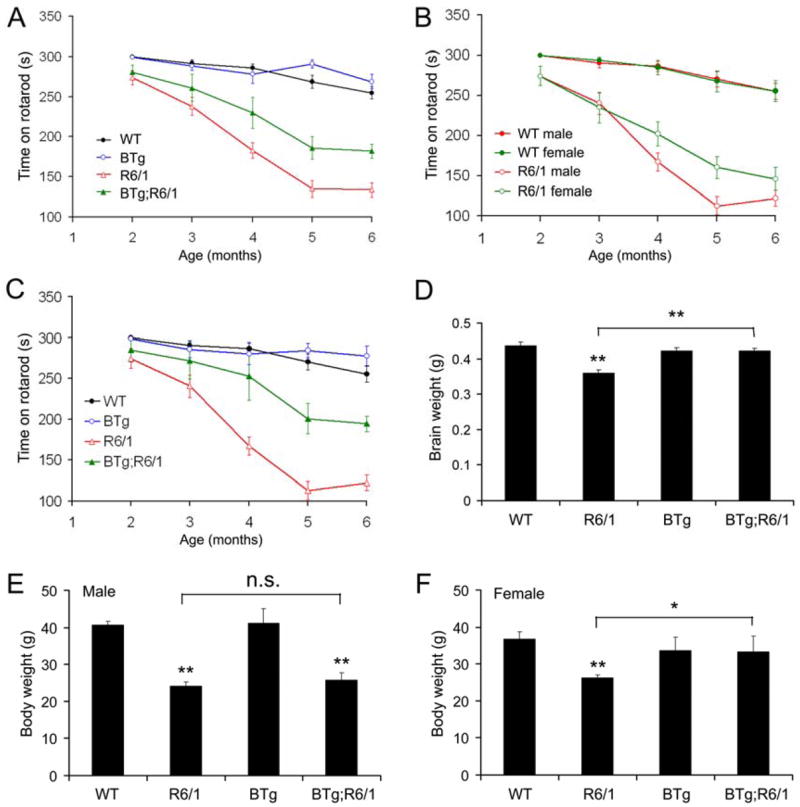Figure 3.

BDNF overexpression improves motor coordination and reverses loss of brain weight in R6/1 mice. A, Performance on rotarod tests. Not every mouse was tested at each time point. The mouse number at each time point was as follows: 30 (2 months), 31 (3 months), 30 (4 months), 30 (5 months), and 24 (6 months) for WT mice; 31, 32, 32, 34, and 24 for R6/1 mice; 13, 16, 15, 21, and 16 for BTg mice; 12, 12, 12, 13, and 11 for BTg;R6/1 mice. B, Differential rotarod performance in male and female R6/1 mice. The mouse number at each time point was as follows: 18 (2 months), 18 (3 months), 18 (4 months), 18 (5 months), and 12 (6 months) for male WT mice; 12, 13, 12, 12, and 12 for female WT mice; 18, 18, 17, 18, and 12 for male R6/1 mice; 13, 14, 15, 16, and 11 for female R6/1 mice. C, Performance of male mice on rotarod tests. The mouse number at each time point was as follows: 18 (2 months), 18 (3 months), 18 (4 months), 18 (5 months), and 12 (6 months) for male WT mice; 18, 18, 17, 18, and 12 for male R6/1 mice; 8, 10, 9, 11, and 7 for male BTg mice; 4, 6, 6, 8, and 7 for male BTg;R6/1 mice. D, Brain weights of WT (6 mice), R6/1 (8 mice), BTg (4 mice) and BTg;R6/1 (4 mice) at 6 months of age. E, Body weight of male WT (10 mice), R6/1 (9 mice), BTg (6 mice) and BTg;R6/1 (6 mice) at 6 months of age. F, Body weight of female WT (10 mice), R6/1 (9 mice), BTg (5 mice) and BTg;R6/1 (4 mice) at 6 months of age. Student’s t test: *, P<0.05; **, P<0.01.
